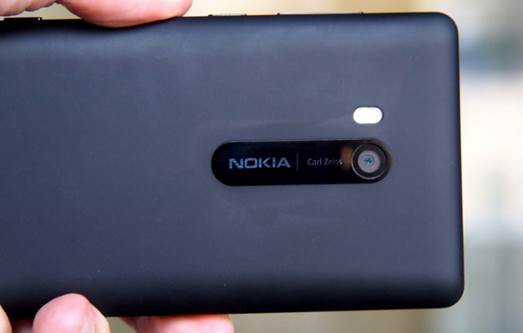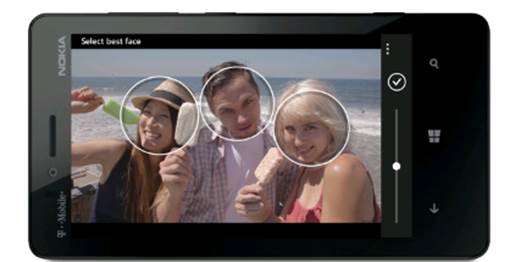Camera
Nokia is proud of the excellent camera
hardware which is equipped for its handsets, but it also well-known for the
fussy settings that require the users to choose the right setting to capture
the best possible shots. Fortunately, Lumia 810’s camera has the best
performance, as it can capture many impressive shots even in the auto mode.

Picture
taken by Lumia 810
The 810 combines with the 8MP sensor with
the Carl Zeiss 26mm f/2.2 lens, accompanied by a dual-LED flash and 2-stage
shutter button. By default, the camera is set to capture the 16:9 ratio
pictures, although we prefer the optional 4:3 aspect ratio. When you choose
camera mode, the camera will activate the Led flash to focus, and then, it
takes a moment to block the theme before really capturing. In this side, the
camera is not the fastest, and its software do not provide the burst
photography option, but your patience will be awarded with the quality results.
In all but the rarest case, Lumia 810 measures the suitable brightness and
offers a precise color balance.
We also especially enjoyed the
touch-to-focus feature of Lumia 810. Nighttime performance is generally good,
but seems to be not as good as Lumia 920 when comparing their lack-of-light
photography. We think that the phone should be laid on a flat surface or rely
on the flash – unless you would get a useless bunch of blur shots.
Photo-taking addicts might feel hesitant
because of the relatively limited options used to adjust the photos, which is
limited to ISO, EV, white balance and a selection of scene mode such as
close-up, night, sport and backlight. However, the camera is very suitable for
normal photography and the users can apply addition stylistic filters to the
photos with Creative Studio application of Nokia

Lumia
810’s camera
Accessible from within the camera
application, you will also find shortcuts for Bing Vision, Cinemagraph,
Panorama and Smart Shoot. Each of those apps is very famous in the Windows
Phones ecosystem with the name of Lenses, and you will discover the ability of
installing additional Lenses in Windows Phone Store.
You might get used to Bing Vision which
allows QR codes and Microsoft tags capturing and searching for books, movies,
and albums by scanning the barcode or covers. Meanwhile, Cinemagraph is mainly
for people who love new things. It allows users to create moving images by
recording short scenes and choose many special areas of the scene to animate. The
purpose is to combine the quality of a picture with the movement of a GIF, but
as we quickly discovered throughout our Lumia 920 review, the files are
converted into still JPG format when you try to share the animations via email,
Twitter or Facebook. Needless to say, the Cinemagraph’s appealing is severely
affected by this negligence. Meanwhile, Panorama is a small application. It is
very easy to use and usually brings exceptional results.
Out of all Lenses, Smart Shoot draws the
most attentions, because it combines the features which are in Scalado Rewind
and Remove. Smart Shoot captures a series of photos and then allows users to
eliminate unexpected elements like cars or pedestrians. It is also good for
group photography, because the most beautiful faces will be focused from some
photos and then will be combined into one best possible photo. Smart Shoot is a
little glossy and still requires your good photo-shooting ability, but when it
works properly, its magic is not inadequate.

Out
of all Lenses, Smart Shoot draws the most attentions.
Video capturing on the Lumia 810 seems to
be unstable. It records 1080p videos with many details and good quality sound
focuses on the background noise reduction. Generally, the colors are lively,
although it’s plain to see that the white balance sometimes shifts during the
clips, unless you are able hold the phone perfectly still. Needless to say,
Lumia 810 is lacking in the interesting optic anti-vibration technology which
you can find in Lumia 920, and the difference is definitely obvious.